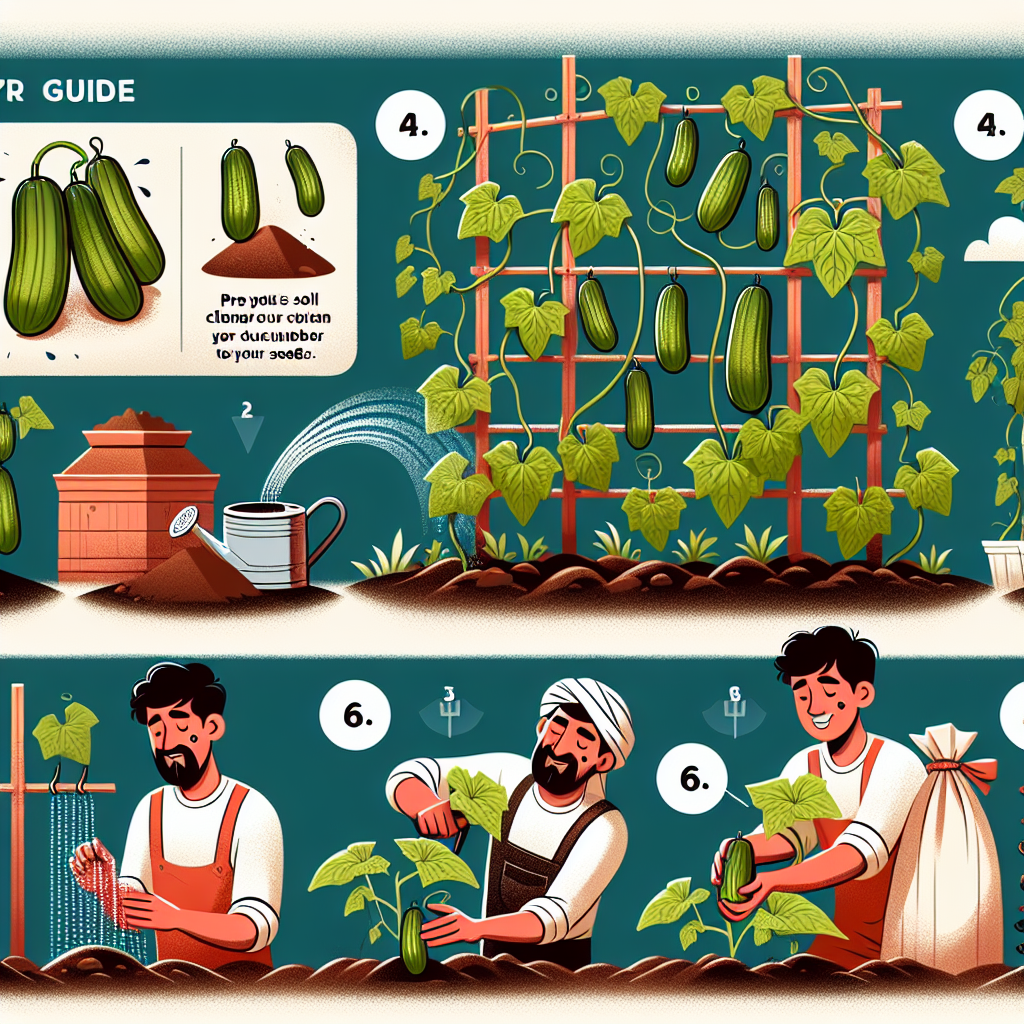
How to manage cucumber plants
How to Successfully Grow and Manage Cucumber Plants
Cucumbers are a popular garden vegetable known for their refreshing crunch and versatility in the kitchen. Whether you’re planting heirloom varieties or modern hybrids, managing cucumber plants requires specific knowledge and techniques to ensure a bountiful harvest. This article will guide you through essential aspects of **cucumber plant management**, covering everything from soil preparation to pest control and harvesting.
Choosing the Right Variety
Before diving into the intricacies of how to manage cucumber plants, it's important to choose the right variety suitable for your climate and gardening space. Cucumbers generally fall into two main categories: slicing and pickling.
- Slicing Cucumbers: These are typically larger and have a smooth skin. Varieties include ‘Marketmore 76’ and ‘English Cucumbers’.
- Pickling Cucumbers: Smaller and bumpier, these cucumbers are ideal for preservation. Varieties include ‘Boston Pickling’ and ‘Kirby’.
Consider your preferences and usage to make the best choice.
Soil Preparation and Planting
Proper soil preparation is a cornerstone of successful cucumber cultivation. Cucumber plants thrive in rich, well-draining soil. Here are some steps to prepare for planting:
- Testing Soil pH: Cucumber plants prefer a pH range of 6.0 to 7.0. You can test your soil using a home testing kit or send a sample to a local agricultural extension office.
- Amending Soil: To enrich your soil, add compost and well-rotted manure. This not only provides essential nutrients but also improves drainage.
- Tilling the Soil: Loosen the soil to a depth of 12 inches to encourage healthy root growth.
- Planting Time: Wait until the risk of frost has passed and the soil temperature reaches at least 60°F before planting seeds or seedlings.
Planting Techniques
Cucumbers can be planted directly in the ground or in raised beds. Follow these guidelines for effective planting:
- Spacing: Space seeds or seedlings about 12 inches apart. If you’re planting in rows, leave 3-4 feet between rows to facilitate air circulation.
- Seed Depth: Plant seeds about an inch deep to ensure proper germination.
- Using Trellises: Consider training cucumber plants on a trellis to save space and improve air circulation, which helps reduce disease risk.
Watering and Fertilization
Water and nutrient management are crucial for healthy growth. Here are effective strategies:
Watering
Cucumbers are high-water-content plants and require consistent moisture. Follow these guidelines for watering:
- Water deeply and infrequently to encourage deep root growth.
- Aim for about 1-2 inches of water per week, adjusting based on your soil type and weather conditions.
- Use drip irrigation or soaker hoses to minimize water contact with leaves, preventing fungal diseases.
Fertilization
During the growing season, cucumbers need adequate nutrients. Here’s a simple fertilization schedule:
- Apply a balanced fertilizer (like 10-10-10) when the plants are 4-6 inches tall.
- Side-dress with compost or aged manure every 3-4 weeks during the growing season.
- Utilize slow-release fertilizers to maintain steady nutrient levels.
Pest and Disease Management
Managing pests and diseases is vital for the health of cucumber plants. Here are common threats and their solutions:
Common Pests
- Striped Cucumber Beetles: These pests can cause significant damage. Use row covers to protect young plants and insecticidal soap for infestations.
- Spider Mites: Look for fine webs on leaves. Increase humidity and wash plants with water to deter them.
- Aphids: These tiny insects can stunt plant growth. Introduce natural predators like ladybugs or apply neem oil.
Disease Management
Many diseases can afflict cucumbers, but here are preventative measures to consider:
- Powdery Mildew: This is a common fungal disease, best managed by ensuring adequate air circulation and avoiding overcrowding.
- Cucumber Mosaic Virus: Controlled through aphid management and crop rotation. Remove infected plants immediately.
- Downy Mildew: Affected leaves will display yellow patches; remove and discard them. Use resistant varieties for better success.
Harvesting Cucumbers
Knowing when and how to harvest cucumbers is crucial for maximizing your yield. Here are some tips:
- Timing: Harvest cucumbers when they are still firm and about 6-8 inches long for slicing varieties and 3-4 inches for pickling types.
- Frequency: Check plants every 2-3 days during prime growing season to encourage continued fruiting.
- Harvesting Method: Gently twist or cut cucumbers from the vine—avoid pulling to prevent damage to the plant.
“Regular harvesting encourages plants to produce more fruit!”
Post-Harvest Care
After harvesting, proper handling and care for cucumbers will ensure they maintain their quality:
- Storage: Store harvested cucumbers in a cool place, ideally around 50°F, and away from direct sunlight.
- Preservation: Fresh cucumbers can last up to a week; consider pickling or canning if your harvest exceeds this timeframe.
Conclusion
Managing cucumber plants requires diligence and awareness, but with proper care, your efforts can yield hearty, delicious cucumbers. From selecting the right variety to understanding watering needs and pest control, this guide covers the fundamentals essential for successful cucumber cultivation. Remember to enjoy the fruit of your labor—nothing beats the taste of homegrown cucumbers in a summer salad or sandwich!
Whether you’re a seasoned gardener or a beginner, knowing how to manage cucumber plants effectively can make your gardening experience rewarding and productive. Happy gardening!
By Guest, Published on August 23rd, 2024